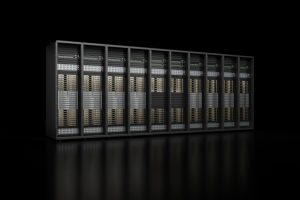
In a nutshell, it is a combination and coordination of wireless technologies – LoRa and FSK at 900MHz, and Bluetooth Low Energy at 2.4GHz – and shared networking that will offer low-power wireless devices across a neighbourhood bi-directional low-data-rate communication with applications running in the cloud.
“Sidewalk is a pipeline that moves data back and forth between an end-point and its respective application server,” according to Amazon. “In addition to security and privacy, a third key area of focus during these transmissions is network optimisation. To optimise the network, Sidewalk allows an endpoint to ‘find’ the best solution given the radios it supports.”
It gives the example of an end-point (wireless sensor or security light, for example) that has LoRa and Bluetooth LE radios: while it communicates primarily on LoRa for longer range, when in range of a BLE gateway, the endpoint can switch to Bluetooth to save power and extend its battery life.
“An important role Amazon plays when managing the network, is to ensure no single gateway becomes overburdened with Sidewalk traffic,” said Amazon. “The maximum bandwidth of a Sidewalk Bridge to the Sidewalk server is 80kbit/s. Today, total monthly data used by Sidewalk enabled-devices, per customer, is capped at 500Mbyte.”
The bridges, which Amazon interchangeably calls ‘Sidewalk Gateways’, shift data between Sidewalk endpoints and Amazon’s ‘Sidewalk Network Server’ (SNS). The bridges are Amazon products – Echo smart speakers via Bluetooth LE, for example, or security cameras.
In the same vein, Amazon interchageably calls endpoints ‘Sidewalk-Enabled’ products or ‘Applications’. These are essentially IoT edge devices, and for Sidewalk they can be Amazon products or 3rd party products. Potential examples are door locks, water sensors and smart lights.
Crucially, Sidewalk endpoints roam on the network – communicating with any bridge that is in range. It could belong to the endpoint’s owner, or be a neighbours bridge, or a bridge device several streets away – the latter because Sidewalk-enabled pet name tags are mooted, and a third-party key-finder called Tile will be joining Sidewalk, said Amazon.
For security, no gateway owner can find out whose endpoint is using that gateway, and no endpoint owner can find out through whose gateway it is communicating. Bridge device owners can remove their gateways from Sidewalk service.
Other security precautions include three layers of encryption – see diagram.
Back at Amazon’s data centre, a Sidewalk network server will be responsible for verifying that the incoming packets are from authorised devices, as well as routing packets to the desired destination (endpoint, bridge or Sidewalk Application Server), and keeping network timing synchronised.
The Sidewalk application servers run the applications associated with individual endpoints. The applications servers are managed by the endpoint manufacturer, and could be in third-party or Amazon data centres.
“Just a week ago, Amazon employees and their friends and family joined together to conduct a test using 700 Ring lighting products which support 900MHz connections,” according to Amazon. “Employees installed these devices around their home as typical customers do, and in just days, these individual network points combined to support a 900MHz network that covered much of the Los Angeles Basin.”
Silicon vendors
Chip makers have been bought in to get the security right.
“With privacy and security protections at the core of Amazon Sidewalk,” said Amazon, “we’ve begun working with leading IoT silicon companies including Nordic Semiconductor, Semtech, Silicon Labs and Texas Instruments to enable chip sets that will power new devices and enable new customer benefits.
Semtech has been brought in for its LoRa expertise. “LoRa is a proven IoT solution that supports a long range, low-power wide-area network [LPWAN] platform and meets Amazon Sidewalk’s goal of providing the network support needed to connect a broad range of low power home devices or sensors,” according to Semtech CEO Mohan Maheswaran.
Silicon Labs has its Wireless Gecko series of chips for sub-GHz and Bluetooth Low Energy protocols. “Silicon Labs and Amazon are teaming up to help OEMs create user experiences with secure, private, easy-to-set-up Sidewalk IoT devices,” said SiLabs v-p Jake Alamat.
According to SiLabs, Sidewalk will be operated by Amazon at no charge to users and “in the future, Sidewalk will power new device experiences such as tools that can self-diagnose problems and order replacement parts.”
Nordic is in the consortium for it 2.4GHz experience including Bluetooth. It previously cooperated with Amazon on the Amazon Common Software (ACS) smart home platform.
An overview of Sidewalk security is available in this document
 Electronics Weekly Electronics Design & Components Tech News
Electronics Weekly Electronics Design & Components Tech News



